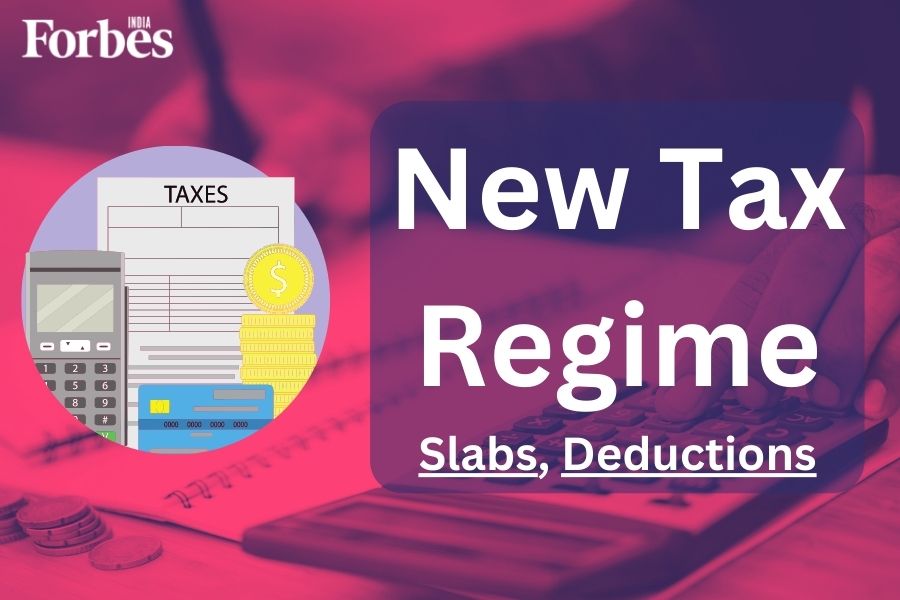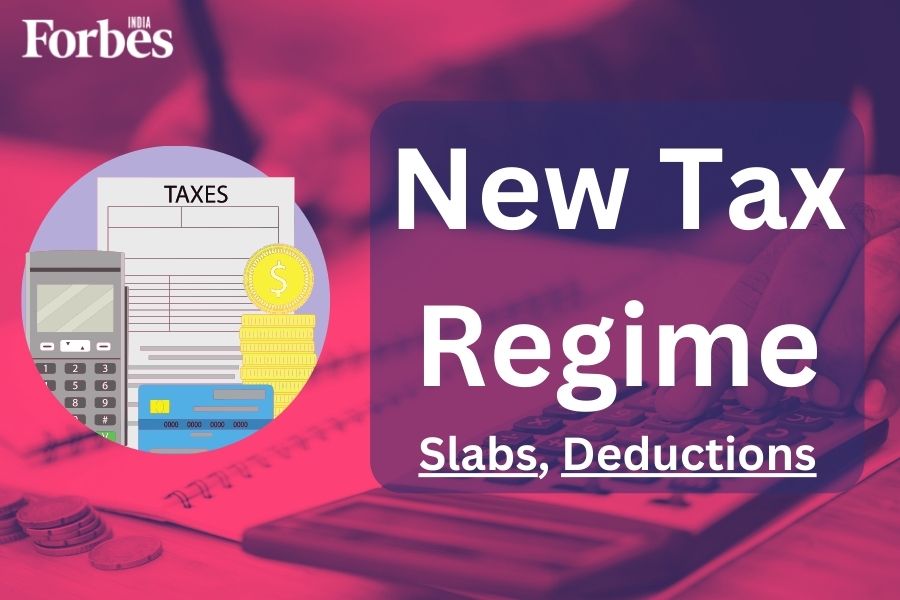
As a tax-paying citizen in India, you might be already aware of the revision to income tax slabs in India every year. With the new tax regime slabs, certain changes have come about. For instance, right now, there are two different income tab slabs in India that you can avail of. The old tax regime versus the new tax regime debate is currently abounding, and so, in addition to covering the technicalities of the new tax regime slabs, we would be comparing the two to make the differences clear to you. In the 2023 Union Budget, the default tax regime was changed. If not specified, the new tax regime will apply for TDS and income tax calculations. The old regime remains an option for taxpayers.
What are Income Tax Slabs in India?
Be it the old tax regime slabs or the new ones, the income tax slabs of India embody a mechanism through which individual taxpayers in India pay their income tax, based on the slab they fall under. It is designed to ensure that those with higher incomes pay a greater amount of tax, while those with lower incomes pay relatively less tax. This ensures a fair distribution of the tax burden in the country.Also Read: Cost inflation index (CII) for FY 2024-25 to calculate capital gains
The income tax slabs in India have been in place for a while now, and it tends to change at every budget announcement. The reason for this is to keep up with the changing economic landscape and to ensure that the tax system remains relevant and effective. It’s worth noting that the slabs vary based on an individual’s income, and therefore, different taxpayers may fall under different tax slabs. This system has proven to be an efficient way of collecting taxes and has contributed significantly to the country’s economic growth. Taxpayers can now choose to pay income tax at lower rates under the new tax regime slabs on the condition that they withdraw from being considered for specific exemptions and deductions available under the old tax regime slabs.
New Tax Regime Slabs for 2024-25:
According to Budget 2024-25, the new tax regime slabs this year would be: Also Read: Income tax returns filing: Know which ITR you should file
Income Tax Slabs in India: New Tax Regime Slabs 2024-25 for Individuals:
| Income Tax Slab | Income Tax Rate |
|---|---|
| Up to ₹ 2,50,000 | Nil |
| ₹ 2,50,001 – ₹ 5,00,000 | 5% above ₹ 2,50,000 |
| ₹ 5,00,001 – ₹ 7,50,000 | ₹ 12,500 + 10% above ₹ 5,00,000 |
| ₹ 7,50,001 – ₹ 10,00,000 | ₹ 37,500 + 15% above ₹ 7,50,000 |
| ₹ 10,00,001 – ₹ 12,50,000 | ₹ 75,000 + 20% above ₹ 10,00,000 |
| ₹ 12,50,001 – ₹ 15,00,000 | ₹ 1,25,000 + 25% above ₹ 12,50,000 |
| Above ₹ 15,00,000 | ₹ 1,87,500 + 30% above ₹ 15,00,000 |
Deductions and Exemptions Under the New Tax Regime Slabs
Under the new tax regime slabs, some deductions and exemptions that were available under the old tax regime slabs will no longer be applicable. The new regime does away with around 70 such deductions and exemptions that were previously available. This change aims to simplify the income tax structure and reduce the tax burden on taxpayers.
However, certain deductions and exemptions are still allowed under the new tax regime. These include:
- Travelling allowance for employment-related transfers.
- Other deductions are allowed under Section 32, apart from additional depreciation.
- Deduction under Section 80JJAA for new employees.
- Taxpayers can claim deductions for investments made in the Notified Pension Scheme under Section 80CCD(2).
- Any conveyance allowance due to work-related travel is also allowed.
- Transport allowance for specially-abled individuals is allowed.
Also Read: Income tax slabs for senior and super senior citizens (new and old tax regimes) for 2024-25
Old Tax Regime Slabs as of 2024-25
You have the option to work around the new tax regime slabs and avail of the old tax regime slabs, here’s how that would work:Also Read: GST state code list and jurisdiction details [2024]
Old Tax Regime Slabs for Individuals Below 60 Years
| Old Tax Regime Slabs | Tax Rate |
|---|---|
| Up to Rs.2.5 Lakhs | NIL |
| Above Rs.2.5 Lakhs – 5 Lakhs | 5% of the total income + 4% cess |
| Above Rs.5 Lakhs – 10 Lakhs | 20% of the total income + Rs.12,500 + 4% cess |
| Above Rs.10 Lakhs | 30% of the total income + Rs.1,12,500 + 4% cess |
Note: those with incomes below Rs.5 Lakhs are eligible for tax deductions under the Section 87A
Old Tax Regime Slabs for Individuals Between 60 and 80 Years
Income tax slabs for senior citizens under the old income tax slabs in India would be:
| Old Tax Regime Slabs | Income Tax Rate for Senior Citizens |
|---|---|
| Up to Rs.3 Lakhs | NIL |
| Above Rs.3 Lakhs – 5 Lakhs | 5% of the total income + 4% cess |
| Above Rs.5 Lakhs – 10 Lakhs | 20% of the total income + Rs.10,500 + 4% cess |
| Above Rs.10 Lakhs | 30% of the total income + Rs.1,10,000 + 4% cess |
Old Tax Regime Slabs for Individuals Over 80 Years
Income tax slabs for super senior citizens under the old income tax slabs in India would be:
| Old Tax Regime Slabs | Income Tax Rate for Super Senior Citizens |
|---|---|
| Up to Rs.5 Lakhs | NIL |
| Above Rs.5 Lakhs – 10 Lakhs | 20% of the total income + 4% cess |
| Above Rs.10 Lakhs | 30% of the total income + Rs.1,00,000 + 4% cess |
Now that we know of the nuances of both the old and new tax regime slabs after the Budget, let’s come to the biggest question of all: old tax regime versus new tax regime: which income tax of India to pick?
Also Read: Form 26AS tax credit statement: How to view and download
Old Tax Regime vs New Tax Regime
In a direct comparison of the old tax regime versus the new tax regime, the old tax regime slabs admittedly provided more benefits to individuals who invested in tax-saving schemes and had a higher income. On the other hand, the new tax regime slabs offer more advantages to those who make fewer investments in such schemes. The new regime aims to simplify the tax structure and reduce the compliance burden for taxpayers.
It is crucial to analyze both tax regimes and compare them before deciding on which one to choose. The benefits and drawbacks of each scheme will vary depending on an individual’s income, investments, and financial goals.
If you are a salaried employee or you have a type of income that may trigger TDS or tax deducted at source, you can choose the new tax regime slabs at the start of the financial year for more benefits. Do remember, however, that you can not go back to the old tax regime slabs at any point in the middle of the year and will get the option to choose again at the start of the next FY.
For income from various professions and businesses, you can only ever get one chance to choose between the old and new income tax slab regime.
Let’s take a look at an example of how you would be taxed under both regimes:
| Category | New Tax Regime Slabs | Old Tax Regime Slabs |
|---|---|---|
| Yearly Income | Rs. 40 Lakhs | Rs. 40 Lakhs |
| Standard Deduction | Rs. 50,000 | Rs. 50,000 |
| Section 80CCD | 0 | Rs. 30,000 |
| Leave Travel Allowance | 0 | Rs. 25,000 |
| Health Insurance | 0 | Rs. 75,000 |
| House Rent Allowance | 0 | Rs. 50,000 |
| Section 80C | 0 | Rs. 1.5 Lakhs |
| Total Deductions | Rs. 50,000 | Rs. 3.3 Lakhs |
| Total Taxable Income | Rs. 39.50 Lakhs | Rs. 36.20 Lakhs |
| Total Tax to be Paid | Rs. 9,20,400 | Rs. 9,34,440 |
FAQs
1. Can you switch between the two tax regimes in the middle of the year?If you have a type of income that may warrant TDS or tax deducted at source, you can choose between the income tax slabs in India at the start of the financial year, when filing tax (required documents) for the previous year. For income from various professions and businesses, you can only ever have one chance to choose between the old and new income tax slab regimes.
2. What should I keep in mind before choosing the new tax regime slabs?
Before opting for the new tax regime slabs, there are certain important points to keep in mind.
- The option can only be exercised if you are an individual or a member of a Hindu Undivided Family (HUF) and do not acquire any business income.
- Once you choose the new tax regime slabs, you cannot switch back to the old regime during the year.
- In case you do decide to withdraw your option for the new tax regime and revert to the old regime, you will have the option to switch back to the new regime during the financial year.
3. Which one should I choose: the old tax regime slabs or the newer slabs?It is important to weigh the benefits and drawbacks of both tax regimes before making a decision. By carefully evaluating your financial situation and considering factors such as income, investments, and tax-saving schemes, you can make an informed decision that will help you save on taxes and achieve your financial goals.
